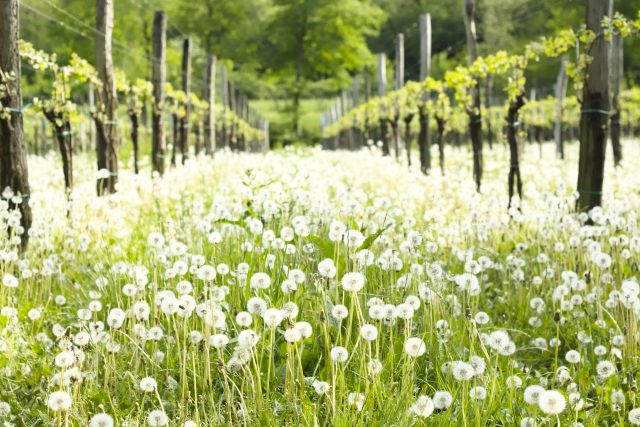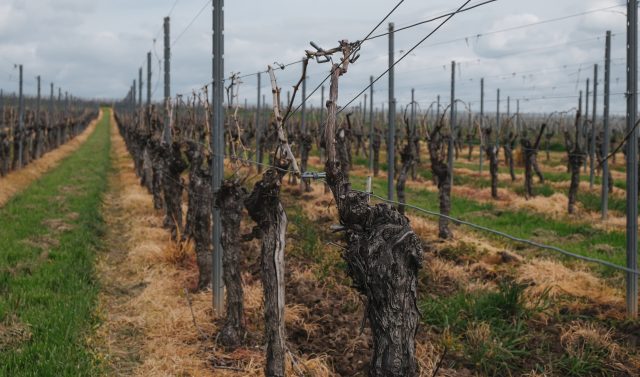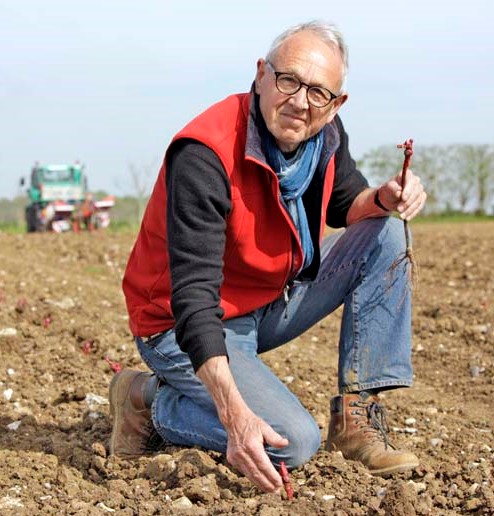This website uses cookies so that we can provide you with the best user experience possible. Cookie information is stored in your browser and performs functions such as recognising you when you return to our website and helping our team to understand which sections of the website you find most interesting and useful.
How to control weeds in a viable vineyard enterprise
Following a debate around ditching herbicides in Champagne, viticultural consultant Stephen Skelton MW considers the options for controlling weeds as part of a viable vineyard enterprise.

I am neither for, nor against, herbicides. However, what I am in favour of is the use of reliable, effective weed control techniques that help owners create and maintain viable, sustainable vineyards, writes Stephen Skelton MW.
Vineyards that yield well enough to repay the considerable amounts of capital required to establish them, plus their annual running costs, and leaving enough over to reward the owners and to keep their employees in work. To do this, harvesting an adequate yield is one of the basic (although certainly not the only) fundamentals of vineyard economics.
Earning a living from the land has always been a struggle against the forces of nature. Red in tooth and claw, nature does its best to resist man’s attempts to grow crops, smothering seedlings with weeds, infecting plants with diseases and sending in armies of destructive insects. And viticulture is no different in that respect than any other crop. Plant a vineyard and neglect it, and weeds, disease and insects will all begin their work and ultimately ruin it as a commercial venture. The vineyard owner therefore has two choices; do nothing and allow nature to dominate – which it will in a few seasons; or take active measures to control and protect the young plants and allow them to grow to maturity and produce a crop – a crop that is the only reward for all the investment in land, infrastructure, and labour that it takes to create a viable vineyard enterprise.
With reference just to weed control, the vineyardist has several choices: the use of cover crops and/or mulches; various mechanical devices ranging from hand-held hoes to automatic under-vines hoes; novel methods such as electrocution, hot steam, and robotic weeders; and herbicides. All have their advantages and disadvantages. Cost and time are two of the main considerations and if a system works (hand-hoeing for instance) but is too costly, then it is unlikely to find a place in all but the very smallest of vineyards. Some systems – double-sided hydraulically driven and activated ploughs for instance, which need to be attached to a suitable tractor – cost tens of thousands of pounds and are suitable only for bigger operators. In addition, anything that disturbs the soil under the vines also disturbs (and damages) the flora and fauna that live there. In addition, driving up and down in the same tyre tracks several times a season also causes compaction which can only be remedied with a subsoiler drawn by an even larger tractor. Finally there are herbicides.

There are several different types of herbicide: ‘pre-emergent’ which sit in the soil for a few months and stop weed seedlings germinate; ‘contact’ which burn off any greenery but do not necessarily kill the weeds; and ‘systemic’ which enter the roots of the plant via the leaves and kill it. Some of these can be combined into one product which (for instance) burns off greenery and stops seedlings germinating. As with all agro-chemicals, any product licensed for use will have gone through extensive testing to ensure safety and security of the environment, the operators and the public. Testing of course cannot ever be 100% perfect and over the years that I have been involved in agriculture, many products have been withdrawn on safety grounds. People often say that herbicides persist in the soil and linger for generations. This may be true, but one thing is certain. Their efficacy is greatly reduced over time as weeds have little trouble in sprouting and within 4-6 months of spraying, the previously sprayed areas are full of healthy-looking weeds. And of course, the vines are unaffected. The main benefits of using approved herbicides in the approved manner is that they are efficient, cost-effective and safe – or as safe as testing can allow. They also do not disturb the undervine area and competition is kept to a minimum. Of course, in irrigated vineyards in hot regions, weeds do not grow quite so prolifically as they do in cooler regions, and in addition, competition for water is less as vines can be irrigated.
There is no perfect solution to weed control and each vineyard owner must make their own decisions. Much will depend on their business model. Are they just growing the grapes to sell? In which case every kilo counts as once the harvest is over, there is no way of increasing revenue. Keeping growing costs down and yields up is the only way to increase net income. However, if you grow grapes to make into wine, then the equation is a very different one. Income will only appear in several months to come, and with high-end and most quality sparkling wines, in several years to come. And the income per kilo of grapes when sold as wine will be several multiples of the basic cost of the grapes.
It is natural to think that spraying what is perceived to be a ‘poison’ in the vicinity of a plant bearing fruit that will make its way into the food chain is somehow wrong, but this perception does not apply to say the spraying of copper in organic and biodynamic vineyards to control Downy Mildew (Peronospora). Organic and biodynamic growers will tell you that ‘quantities allowed have come down’ (true) and that ‘quantities allowed are restricted’ (also true) but neither of those facts get over the problem that copper persists in the soil and harms the living organisms that it comes into contact with.
As I was finishing this article, some interesting news came through from Champagne. In the face of opposition from some growers, the CIVC’s pledge in 2018 to make Champagne ‘herbicide free’ by 2025, has very definitely gone on the back burner. Growers say that without herbicides, yields fall by 15 per cent, a loss of approximately €15,225 per hectare on an average crop, and they cannot afford to farm without them.
Viticulture is a high-input, high-output way of making a living from the land and as with all permanent fruit crops, the initial investment can take years to recoup. Good weed control, however it is achieved, is essential for both quality and quantity, the two keys to financial success.
About Stephen Skelton MW

Stephen Skelton MW has been involved with growing vines and making wine since 1975. After working and studying in Germany, he returned to Great Britain in 1977 to establish the vineyards at Tenterden in Kent (now the home of the country’s largest wine producer, Chapel Down Wines), and made wine there for 22 consecutive vintages. He now works as a viticultural consultant, setting up vineyards to produce both still and sparkling wines. He is an award-winning author and has published over a dozen books, almost all on English and Welsh vineyards and wines. His latest book The Knight Who Invented Champagne is about the development of glass bottles in the early 1600s. He became a Master of Wine in 2003 and is a Liveryman of the Vintners’ Company.
Read more
What’s fuelling the herbicide debate in Champagne
Organics teaches you where you should and shouldn’t grow grapes

